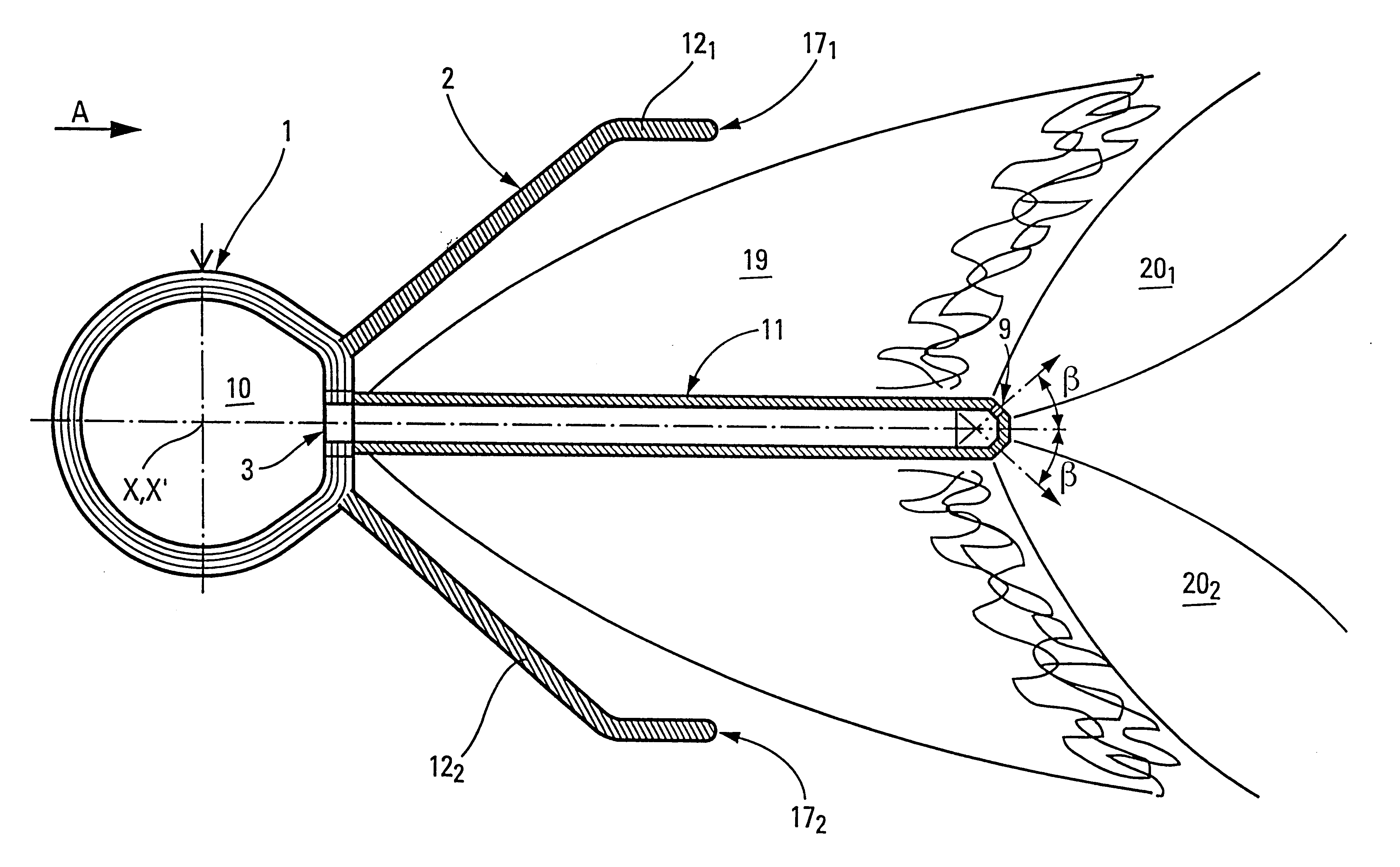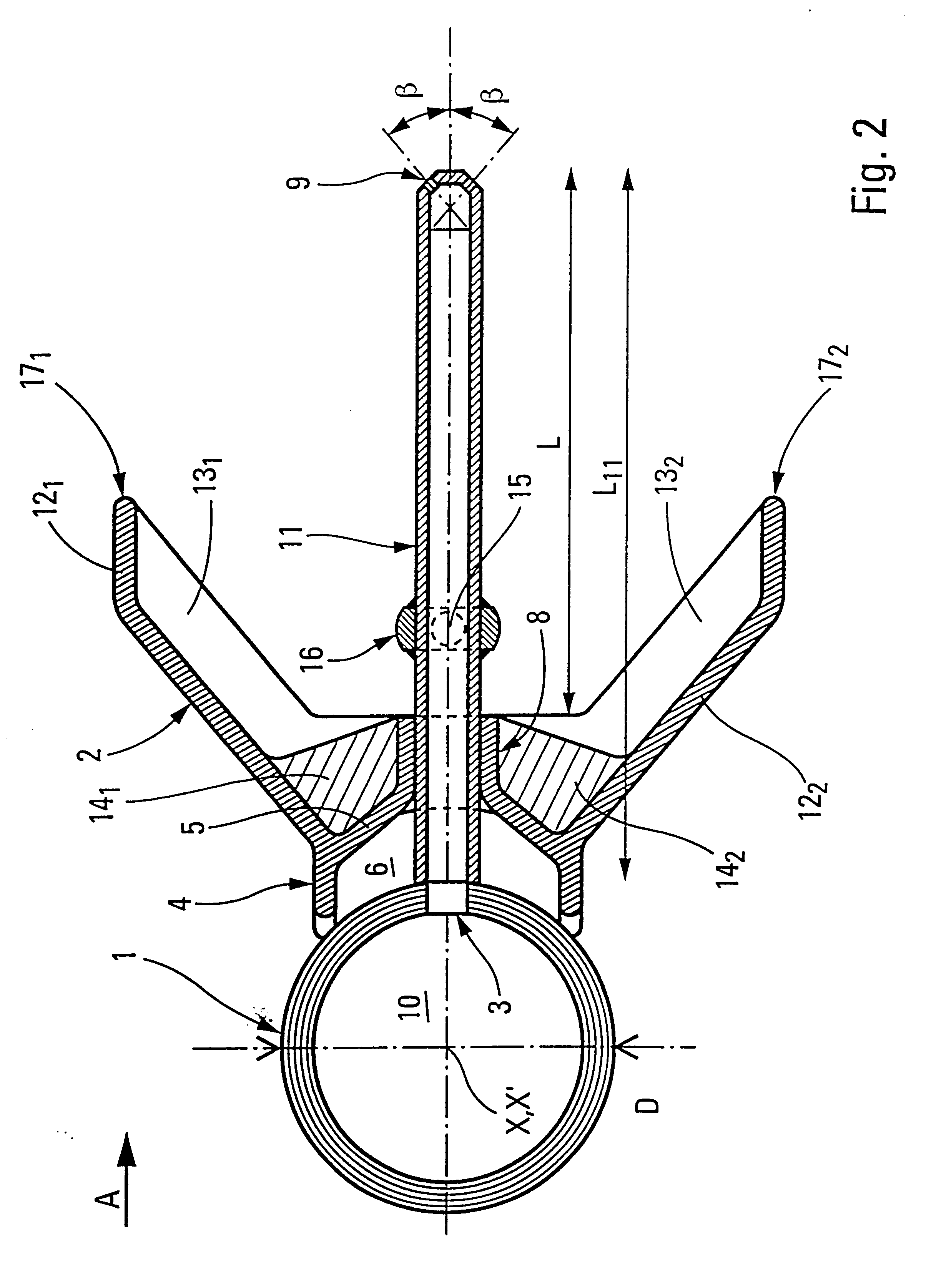Gas burners for heating a gas flowing in a duct
a technology of gas burners and ducts, which is applied in the direction of combustion types, combustion processes, lighting and heating apparatus, etc., to achieve the effect of preserving good flame stability
- Summary
- Abstract
- Description
- Claims
- Application Information
AI Technical Summary
Benefits of technology
Problems solved by technology
Method used
Image
Examples
Embodiment Construction
)
The invention relates to a type of burner to be placed in a duct to heat a gas flowing along the duct. The burner comprises a pipe 1 of axis XX' suitable for extending transversely across the flow direction A of the gas. The pipe can be circular in section and have a diameter D, as shown in FIG. 2, but it could equally well be arbitrary in section, for example, having a section as shown in FIG. 1. It can carry a plurality of burner blocks placed side by side to make up a burner rail.
The pipe 1 is fed with fuel gas 10 and is pierced by at least two holes 3 per burner block with the two holes being in alignment on a common generator line 18 which is parallel to the axis XX' of the tube. The pipe 1 carries a flame stabilizer 2 formed by two deflector-forming fins 12 diverging on either side of the generator line 18.
In the embodiments shown in FIGS. 2 to 5, the deflector stabilizer 2 can have walls 13.sub.1, 13.sub.2, forming reinforcing ribs at the ends, along the direction of the axi...
PUM
 Login to View More
Login to View More Abstract
Description
Claims
Application Information
 Login to View More
Login to View More - R&D
- Intellectual Property
- Life Sciences
- Materials
- Tech Scout
- Unparalleled Data Quality
- Higher Quality Content
- 60% Fewer Hallucinations
Browse by: Latest US Patents, China's latest patents, Technical Efficacy Thesaurus, Application Domain, Technology Topic, Popular Technical Reports.
© 2025 PatSnap. All rights reserved.Legal|Privacy policy|Modern Slavery Act Transparency Statement|Sitemap|About US| Contact US: help@patsnap.com



